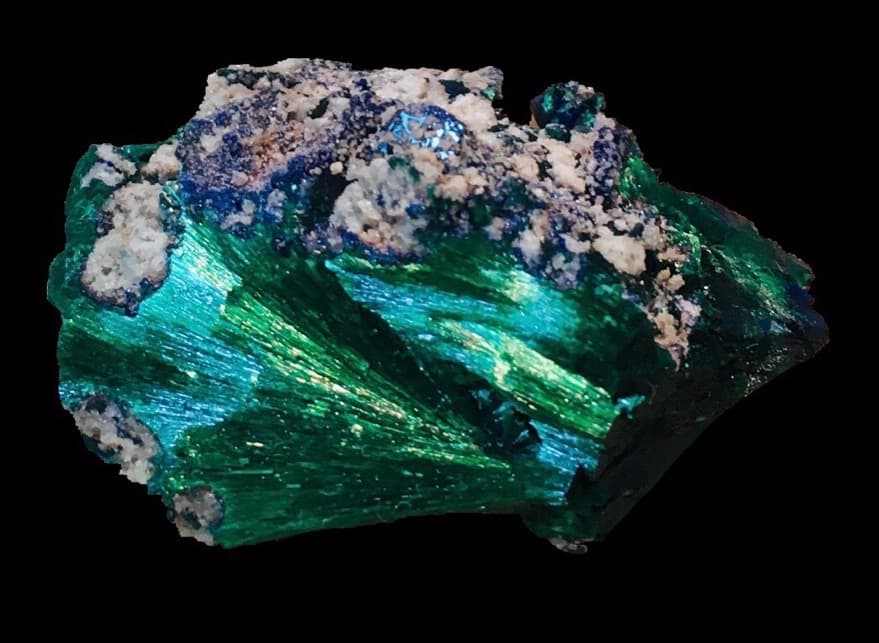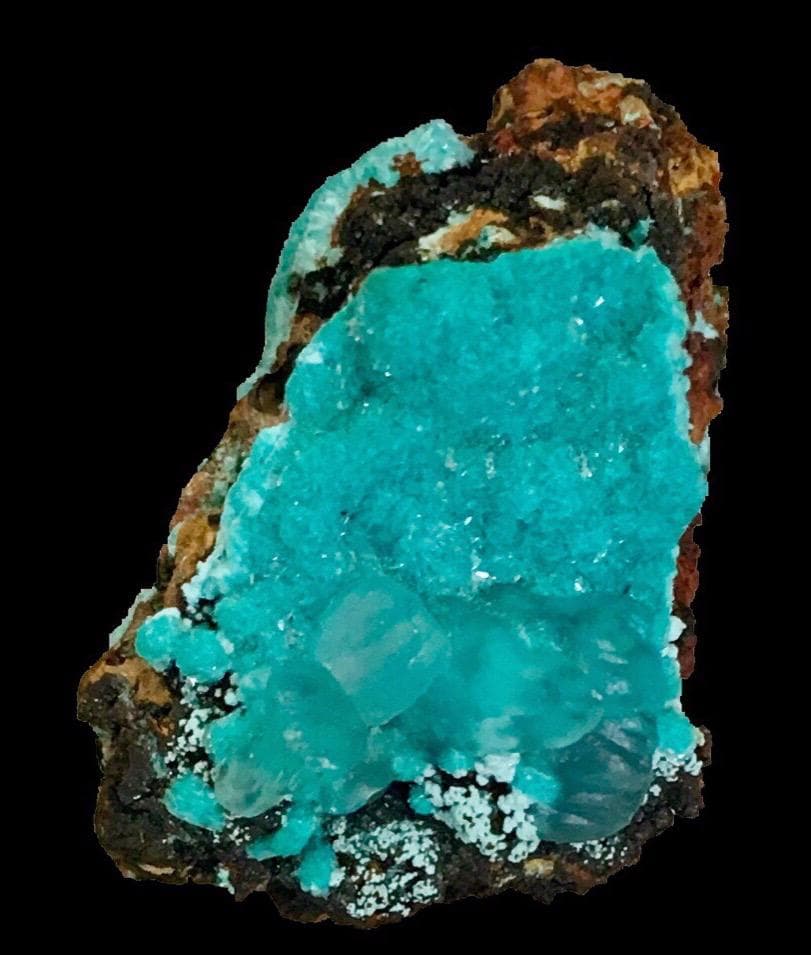Carbonate minerals contain the carbon ion CO32- in its basic structure and composition. Carbonates are the second-largest mineral group by the composition of Earth's crust, after silicate minerals ↗. The crystal structure of carbonate minerals exhibits the trigonal symmetry of the carbonate ion.
A carbon-ion is composed of an oxygen atom surrounded by three oxygen atoms on the vertices of an equilateral triangle - like framework. The carbon anion often is associated with metallic elements, such as sodium, iron, aluminum, manganese, aluminum, zinc, barium, and copper.
As a result of the planar structure of the carbonate anion, carbonates have anisotropic chemical bonds and are often soft.
The most common carbonate minerals are rock-forming. For instance, calcite and dolomite are the basis of marble and limestone. Calcium Carbonates such as aragonite are often found in sedimentary deposits and fossils as a replacement mineral. Other carbonates are ores for metals (ie. Smithsonite for Zinc, Cerrustite for Lead).
Many rock-forming carbonates share similarities to two sperate structure groups - calcite and aragonite. Calcite groups contain Co3 groups which are parallel to one another and are in horizontal layers. The calcium atoms are bonded by six oxygen atoms, three of which are connected to other Co3 groups on the bottom of the structure, and the other three of which are connected to a structure on top of the group. The aragonite's Co3 groups are arranged similarly, but the calcium cation is surrounded by nine oxygen atoms rather than six, producing an orthorhombic crystal system.
Carbonate minerals have been categorized into divisions based on chemical composition. Such divisions include simple carbonates which are composed primarily of carbon with few or no other compounds, hydrated carbonates that contain or originated with water, bicarbonates which contain the sodium ion, and compound carbonates that contain other anions beside the carbonate.
Examples
Anhydrous
-
Calcite Group (trigonal)
- Calcite
- Gaspeite
- Magnesite
- Smithsonite
- Rhodochrosite
-
Aragonite Group (orthorombic)
-
Aragonite
-
Cerrustite
-
Strontianite
-
Witherite
-
 Rhodochrosite from Pasto Bueno, Pampas District, Pallasca Province, Áncash, Peru
Rhodochrosite from Pasto Bueno, Pampas District, Pallasca Province, Áncash, Peru
Compound (Anhydrous)
-
Dolomite Group
-
Ankerite
-
Dolomite
-
 Marcasite, Pyrite, on Dolomite from Black Rock, Lawrence Co., Arkansas
Marcasite, Pyrite, on Dolomite from Black Rock, Lawrence Co., Arkansas
Hydroxl or Halogen
-
Monoclinic system
-
Azurite
-
Hydrocerrustite
-
Malachite
-
Rosasite
-
Phosgenite
-
Hydrozincite
-
Aurichalcite
-
 Malachite, Azurite from Milpillas Mine, Cuitaca, Santa Cruz Municipality, Sonora, Mexico
Malachite, Azurite from Milpillas Mine, Cuitaca, Santa Cruz Municipality, Sonora, Mexico
Hydrated
-
Hydromagnesite
-
Ikaite
-
Lansfordite
-
Monohydrocalcite
-
Natron
References
"Carbonate minerals", Wikipedia, 24 August 2019 https://en.wikipedia.org/wiki/Carbonate_minerals ↗
"Carbonate mineral", Encyclopedia Brittanica, 24 August 2019 https://www.britannica.com/science/carbonate-mineral ↗
